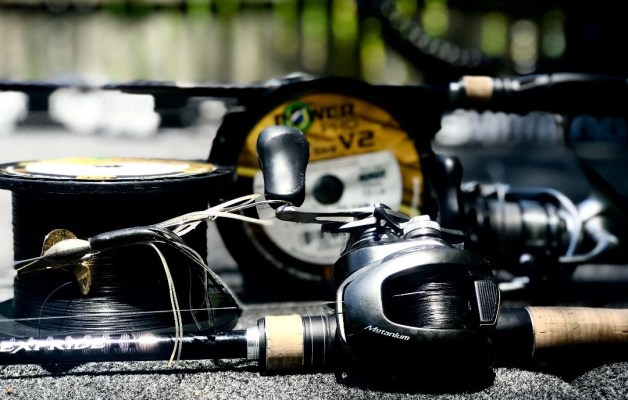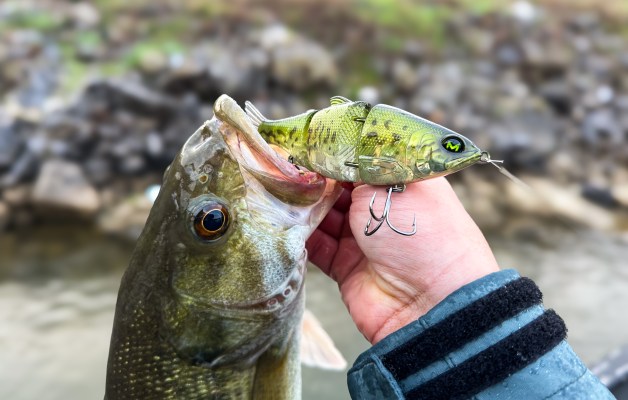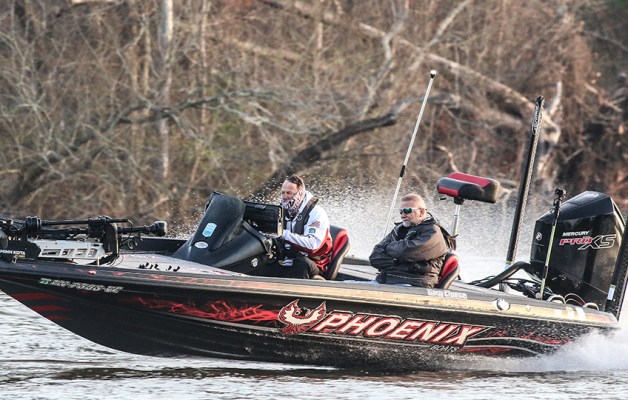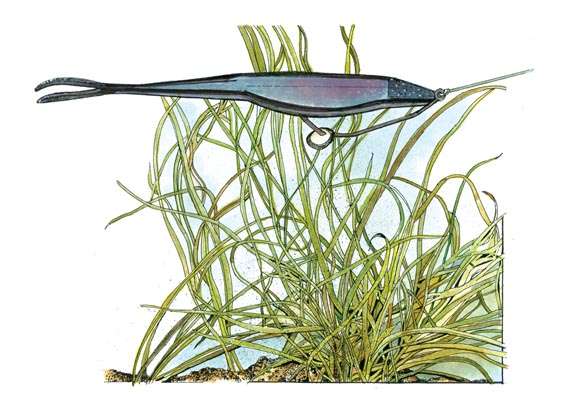
Tricking bass to bite on heavily pressured lakes often requires a break from traditional tactics. Pros say it all the time: “When following other anglers down a productive bank, show the fish something different.” A different lure might be the answer, but a different presentation with a proven lure might work even better. Not that everyday or traditional presentations aren’t worthy, but there are some lesser-known rigging tricks that are pretty cool when you need a subtle, strategic change. Here are some we found to be worthy.
Dangle Berry Rig
Want a unique, free-falling action on your soft stickbaits, swimbaits or stickworms? Try Lee Sisson’s Dangle Berry rig (www.sissonsdesigns.com). The former Elite Series pro and lure designer says his creation is what helped him get into the Elite Series before he retired from professional tournament fishing a couple years ago. “I was making it for myself and a few friends, but it caught on and I took it to full production,” says Sisson. “It’s a great way to catch a nice limit.”
The rig consists of a 4/0 offset Mustad hook with a free sliding weight on the hook shank. The uniquely molded weight has a hole in which the sinker can slide up and down the shank, and the hook has a spring-like bait keeper on the eyelet for securing plastics.
“One advantage this has over weighted hooks is it doesn’t dampen the action,” explains Sisson. “The free swinging weight allows the bait to roll side-to-side during the retrieve.”
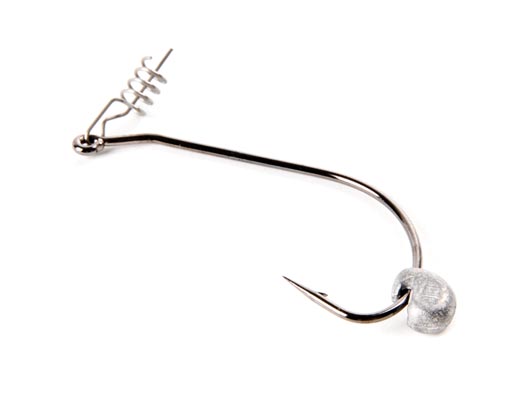
Perhaps a bigger advantage is the action it imparts in a lure when it falls. The weight moves to the center/bottom of the hook and keeps the bait horizontal while the lure exhibits a flutter-like swimming action.
Because it’s a visible presentation, Dangle Berry rigs work best in clear water 6 feet deep or less “The secret is to fish it slow and let it settle to the bottom,” he says. “It fishes great over grass because the weight doesn’t dig in like other weighted rigs.” When twitching it with a Fluke-style bait, the lure darts erratically because the weight slides to the end of the hook and enhances the pivoting action. “Sometimes I’ll just pull it and let it dart a few times, then kill it to let it flutter down,” Sisson describes. The Dangle Berry is only offered in one weight size. “When I was experimenting, I discovered getting the precise weight is critical,” Sisson says. “I have no idea what it weighs; I just know the weight and hook are perfectly matched to achieve the action I desired.”
Owner Jig Rig
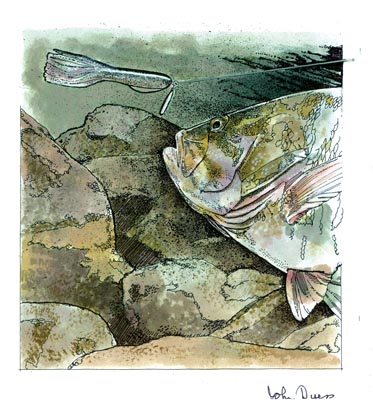 The new Jig Rig (www.ownerhooks.com) gives soft plastic lures a different action that can make a difference on heavily pressured lakes. It consists of a free-swinging, teardrop-shaped sinker attached to a ring on the eye of an extra wide gap, Z-lock shoulder bend, offset Owner hook. The sinker keeps the weight ahead of the lure and allows the bait to pivot freely as it falls. This provides multiple benefits.
The new Jig Rig (www.ownerhooks.com) gives soft plastic lures a different action that can make a difference on heavily pressured lakes. It consists of a free-swinging, teardrop-shaped sinker attached to a ring on the eye of an extra wide gap, Z-lock shoulder bend, offset Owner hook. The sinker keeps the weight ahead of the lure and allows the bait to pivot freely as it falls. This provides multiple benefits.
First, the weight’s location allows the bait to fall perfectly vertically, its shape can penetrate cover easily and it’s more weedless. Furthermore, the soft plastic bait pivots independently, providing an action you don’t get with traditional Texas rigged plastics. If you pull it horizontally over the bottom, the bait will swim side-to-side above the sinker – another action the bass don’t see routinely. You can rig it with just about any type of plastic and still get a unique action from it, says Elite pro Byron Velvick, who really likes it for bedding bass.
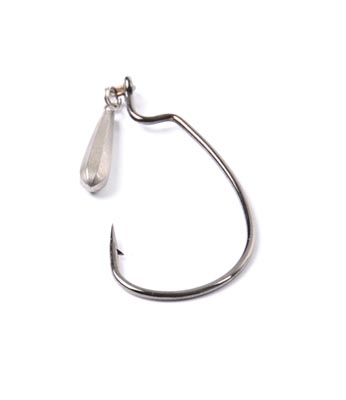
“Bedding bass see so many things, yet this gives them a whole different look,” he explains. “With the way the sinker is positioned, floating soft plastics will dive nose down with the tail of the bait up. It will resemble a creature trying to feast on the eggs, and bass can’t stand that.” Although he hasn’t tried it, Velvick suspects it would be equally dangerous on smallmouth in the Great Lakes, where gobies are present.
“If you look at how a goby hovers above the rocks, you can put a goby colored tube on and wreck the smallies,” he expects. “Another thing: If you pause the bait, it will move subtly in the natural currents of a lake, which makes it look even more realistic.” The Jig Rig casts like a bullet because the weight cuts through the wind. It’s offered in sizes 3/16 and 1/4 ounce and comes in a variety of hook sizes. It’s available with tungsten or lead weights. The weights can be removed and added to the split ring without retying the bait.

Recoil Rig
Elite pro Randy Howell is surprised that more guys aren’t using the Recoil Rig for drop shotting.
“It’s really deadly when fishing is tough, like during those high pressure weather periods,” he says. “It adds an entirely new dimension to drop shotting techniques.”
The Recoil Rig (www.secretweaponlures.com) consists of a 5-inch, sheathed elastic cord that attaches to a dropper line between the lure and sinker. When the sinker is presented on the bottom and the line is taut, the bait gets lively from the effect of the elastic cord when you gently shake the rod tip.
“When drop shotting without the recoil, the sinker hops off the bottom,” Howell says. “With this, the weight stays there, and the band stretches and makes the bait wiggle a lot more.”
Also, he adds, if you barely shake the rod tip, the elastic band causes the bait to zig-zag in circles.
“When I’ve fished Lake Erie and Champlain, I get more bites and they seem to bite it quicker that way,” he says. “I can make a Yamamoto Shad Shake Worm look like a minnow swimming around.”
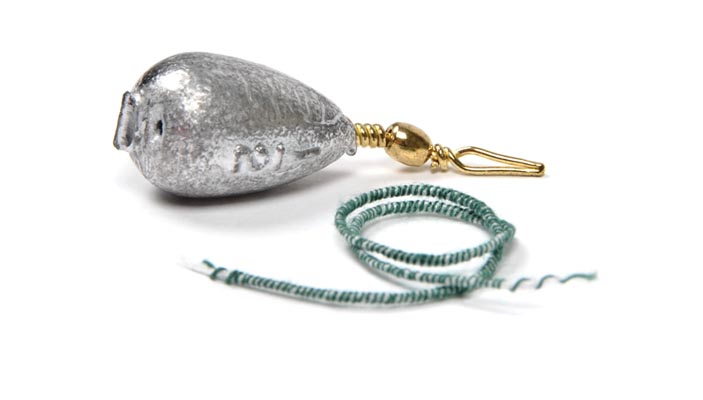
Howell, who likes fishing the rig on a spinning outfit rigged with braided line and a fluorocarbon leader, says it also works great on bedding fish to tempt bass that won’t bite standard drop shot rigs.
“I’ve also seen guys have success by pitching it into holes in the grass,” Howell notes. “It allows you to impart more action to attract attention to the bait while keeping it near the bottom.”
Recoil Rigs are sold in kits for different types of applications with a variety of sinker shapes and sizes.
Three-way crankbait rig
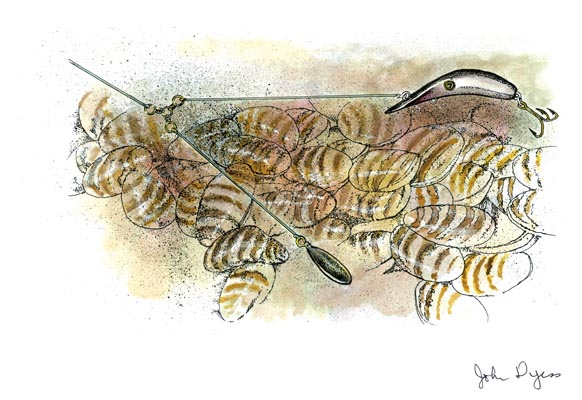
Reaching depths beyond traditional crankbait limitations with shallow-running baits is no problem with the three-way crankbait rig, a popular tool on the Great Lakes.
It should work anywhere there’s a rocky or clean bottom,” says Frank Campbell, a Niagara Falls, N.Y., guide. “It’s an effective way to fish on windy days and through areas where the bass are piled up.”
The setup is pretty simple. Tie a three-way swivel to your main line (he uses 10-pound fluorocarbon). Add a 6- to 10-inch leader tied to a heavy sinker on one prong of the swivel and another 4- to 6-foot leader on the other prong and attach that to a crankbait. Campbell uses 1- or 1 1/4-ounce “pencil” sinkers on his drop line. The cylindrical sinkers don’t snag as easily as others when bounced over a craggy bottom.
“I use this rig where there is current or enough wind that I can drift with the current,” he says. “But you also can cast it over deep water and wind it along the upside of a reef.”
The rig allows him to fish baits that normally dive to a maximum of 10 feet in water as deep as 25 feet. His favorites are the fire tiger Bomber 6A or 7A for stained water and the Lindy River Rocker (alewife or aunt creepy colors) in clear water. “You can match the forage better with smaller crankbaits, which are more realistic than the big billed, deep diving baits designed to get to 20 feet or more,” he explains.
When fishing breaklines, he sets the boat sideways and uses the current and wind to propel his boat and casts his bait at a 45-degree angle along the dropoff. It’s critical, he says, to get the bait to the bottom where it glances off rocks and structure.
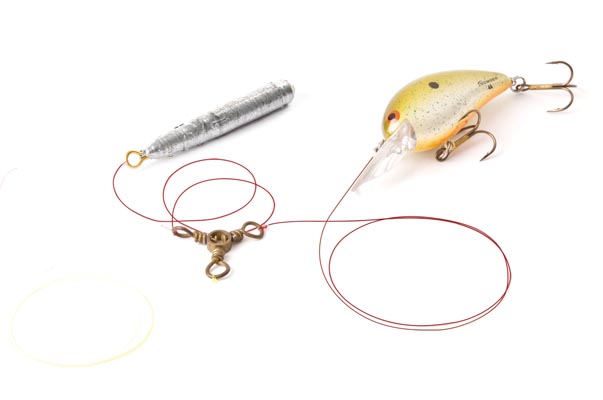 In fact, he adds, the combination of the sinker tapping along the bottom followed by the bait banging behind it is an added attraction. “I think it looks like a baitfish chasing something and that excites bass into striking,” he says. It’s not a rig to fish in heavy grass or wood, but the lure doesn’t hang up as easily in rocks as one might expect. “One trick we use is to remove the front or middle hook,” Campbell says. “We did some experimenting a few years ago and found out that the hookup with fish was even better at times.” While Carolina rigging a crankbait may seem like a more practical means of getting crankbaits deep, Campbell says it doesn’t work where zebra mussels exist. The line will fray on the sharp edges as it drags on the bottom. “With this, the sinker and the bait spend more time than the line on the bottom,” he explains.
In fact, he adds, the combination of the sinker tapping along the bottom followed by the bait banging behind it is an added attraction. “I think it looks like a baitfish chasing something and that excites bass into striking,” he says. It’s not a rig to fish in heavy grass or wood, but the lure doesn’t hang up as easily in rocks as one might expect. “One trick we use is to remove the front or middle hook,” Campbell says. “We did some experimenting a few years ago and found out that the hookup with fish was even better at times.” While Carolina rigging a crankbait may seem like a more practical means of getting crankbaits deep, Campbell says it doesn’t work where zebra mussels exist. The line will fray on the sharp edges as it drags on the bottom. “With this, the sinker and the bait spend more time than the line on the bottom,” he explains.


